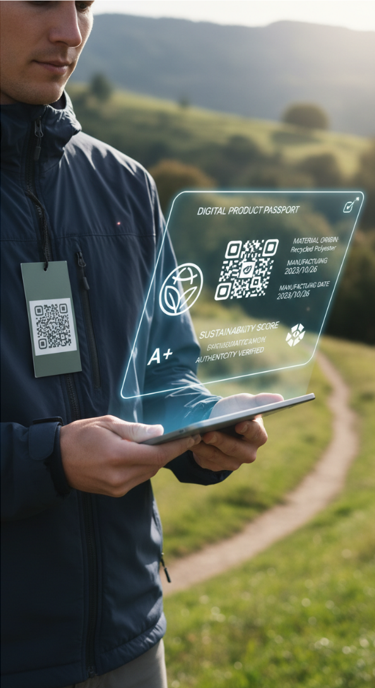
The European Union’s Ecodesign for Sustainable Products Regulation (ESPR) is redefining how products are conceived and manufactured. Under the ESPR framework—which states that “around 80% of a product’s environmental impact is determined at the design stage”. Its goal is to ensure that every stage of a product’s life—from production and use to recycling—is more sustainable, traceable, and circular. At the heart of this initiative lies the Digital Product Passport (DPP), which will soon become the essential “entry ticket” for products sold in the European market.
From Regulation to Opportunity: Why DPP Matters for Brands The DPP is not merely a compliance requirement—it signals a data-driven shift in global market dynamics. By mapping and disclosing life-cycle data, brands can demonstrate ESG performance more effectively, while also building new value chains by using product-level data to maintain ongoing consumer connections and develop extended services or circular business models.
Yet, the transition comes with its challenges:
- Complex data integration: Global textile supply chains involve multiple tiers and inconsistent data formats.
- Confidentiality concerns: Transparency must be balanced with the protection of proprietary formulations and supply partnerships.
Hwafune’s Solution: Data Transparency × Secure Technology
At Hwafune, we have redefined fabric management with a digital-first approach. Through our FabriSelect™ online fabric database, partners can instantly access technical specifications, 3D material models, and will progressively introduce new data on carbon emissions and environmental impact in future phases.
Unlike open-access platforms, FabriSelect™ operates under a private-link sharing system, allowing brands to preserve data privacy and visibility. Additionally, it’s worth noting that all Hwafune’s R&D and production are based in Taiwan, ensuring complete oversight of technology and quality, and significantly reducing the risk of duplication by international competitors. This structure ensures that transparency and competitiveness can coexist.
The implementation of ESPR and DPP marks a new era in global manufacturing—one where data itself becomes a core source of value. At Hwafune, we believe that only by integrating sustainable materials, digital tools, and full mastery of our core technologies can we create solutions that balance environmental responsibility with commercial efficiency.


